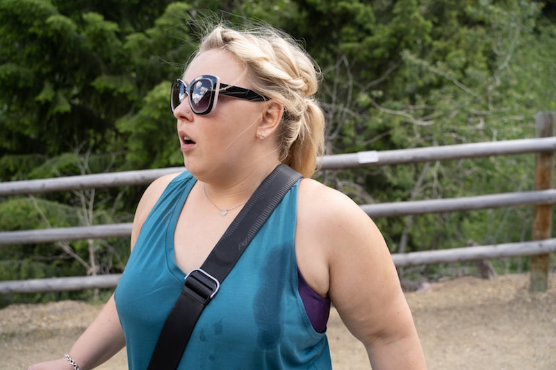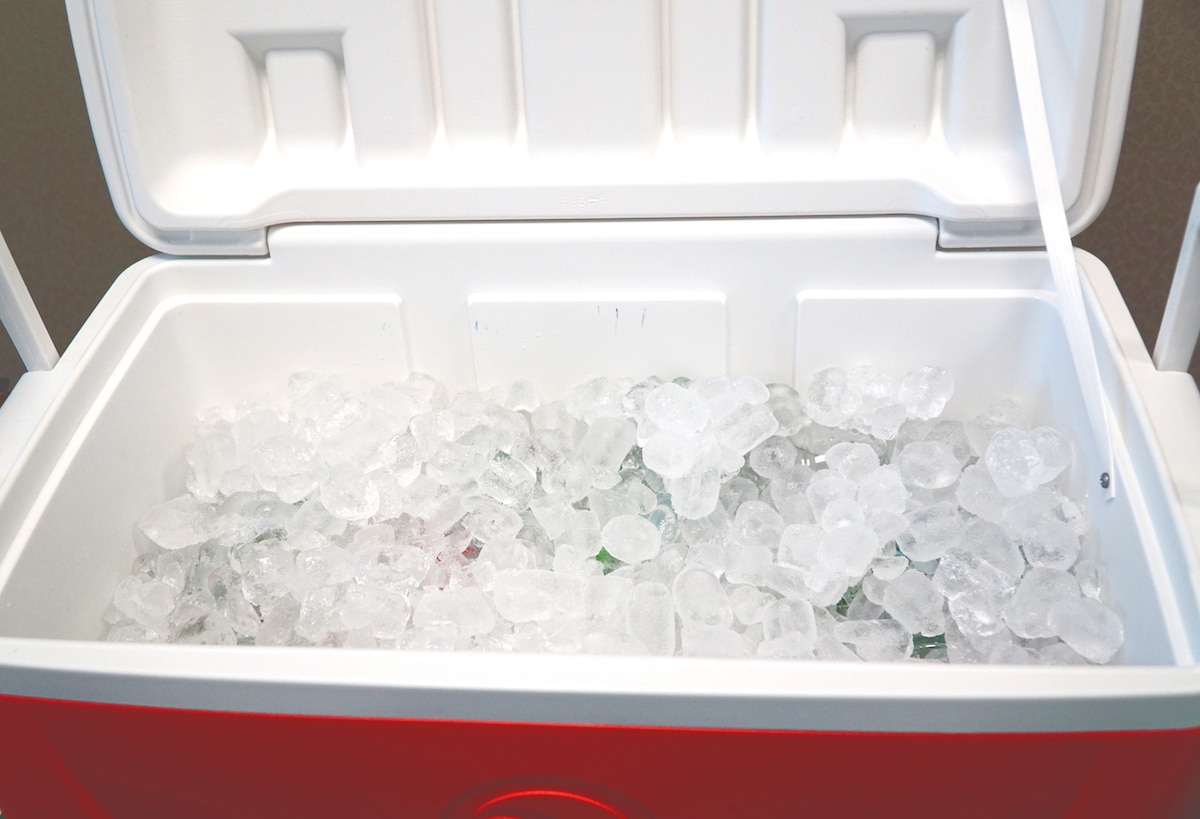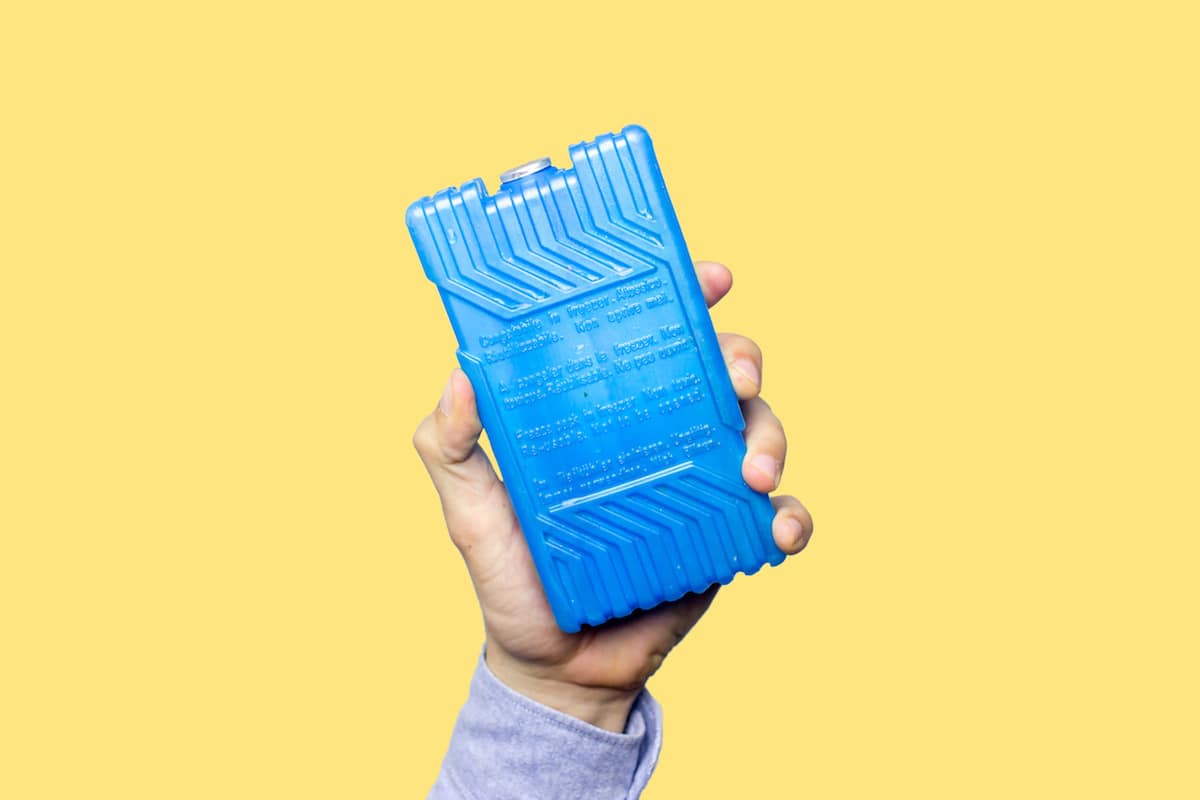Let’s face it, worrying about water pales in comparison to the fun plans for camping. However, keeping your body hydrated is essential to a healthy and effective lifestyle. If you don’t drink enough water on a hot day, a fun hike in the woods can turn dangerous. Dehydration can quickly lead to a serious health crisis.
What We'll Cover
- Plan Your Water Sources Before the Trip
- What Affects How Much Water You Need to Bring for Camping
- Can You Drink Too Much Water?
- How to Stay Hydrated
- Don’t Wait Until You Feel Thirsty
- Protect Yourself from the Sun
- Drink at Water Sources if Water is Scarce
- What Are the Symptoms of Dehydration?
- How To Locate Water When Camping
- Don’t Panic
- Look for Water at a Vantage Point
- Look for Livestock
- Follow Dried Up Streams to Look for a Source
- Dig for Water
- Gather Condensation Using Condensation Traps as a Last Resort
- Valuable Hydration Gear Available for Camping
- Hydration Bladders
- Water Filters and Purifiers
- Hydration Packs
- Water Bottles
- Iodine Pills
- Camping Stoves & Pots
- Keeping Your Dog Hydrated While Camping
- Conclusion
When planning for a camping expedition, follow these tips. They will help you keep yourself healthy so you can make the most of your camping trip.
Plan Your Water Sources Before the Trip
Before you leave your home, you need to know how much water you’ll be taking with you. Will you be buying a few gallons from the grocery store, or are you going to rely on water already at the campground?
If you can, read guidebooks and study maps while planning your camping trip to find water sources. Knowing where a lake or river is can reduce the risk of dehydration while camping. And if it’s the dry season, don’t be afraid to bring your own water as a precaution. When it comes to dehydration in the wilderness, you’re better safe than sorry.
What Affects How Much Water You Need to Bring for Camping
Your body is predominately made up of water, and that water is constantly being expelled through sweat, saliva, and so on. As such, you need to replenish that water. But how much water do you need to bring for camping? There is no single answer that works for everyone.
Your body typically requires one half your body weight in ounces for normal daily activity. So, expect to need even more water when you are camping. But how much extra water depends on three factors.
Climate Condition
When it is hot, your body will naturally step up your production of sweat to keep your body cool. This is why dehydration is so much more common during the summer than any other season. If you’re going to be camping in hot weather, be sure to bring extra water.
Level of Exertion
The harder you push yourself, the more water you need to function. If you know you’ll be doing strenuous activities like hiking or rock climbing, drink more water.
Individual Needs
Everyone has different needs when it comes to water. Tall, muscular people naturally need more water than smaller people.
Health and medical needs should also be considered. For example, some medications may dehydrate your body faster. Remember these things when deciding how much water you need each day.
Can You Drink Too Much Water?
Keeping your body hydrated is important every day, no matter where you are. But is there such a thing as drinking too much water? Yes, you can. Drinking too much water can result in hyponatremia. This occurs when there isn’t enough sodium in your blood due to the excess water. Sodium is a key electrolyte, and it helps maintain the proper amount of water in your cells. When too much diluted fluid exists, the body’s cells inflate, causing mild to fatal health risks.
The symptoms of hyponatremia include things like dizziness, fatigue, lethargy, and confusion. If you think you may be experiencing hyponatremia, drink a sports drink or snack on something salty. This can help rebalance your sodium levels.
On average, the amount of water you should drink daily equals one half your body weight in ounces. For example, someone who weighs 120 pounds you should drink about 60 ounces each day. But wait! That’s just normal water intake. When you’re camping and hiking, your body will be sweating. That means more water is being consumed to overcome natural fluid loss through sweating and urination.
How to Stay Hydrated
The key to staying hydrated while camping or hiking are also good to know for your everyday life. Here are a few tips.
Don’t Wait Until You Feel Thirsty
When you are camping and hiking, it’s easy to forget that you are losing hydration. On a normal day, you should be drinking at least one ounce for every two pounds of body weight. More is needed when you are in hot conditions or exerting yourself.
The best camping advice is this: don’t wait to drink until you feel thirsty. Take frequent breaks and rehydrate your body before you feel thirsty. This is the best way for your body to process fluids naturally.
When you are feeling thirsty, your body is telling you it is already becoming dehydrated. According to Baylor College of Medicine, the sensation of thirst signifies about a 2% level of dehydration. The study shows that the body can tolerate about 2% dehydration. Further dehydration affects blood pressure, the cardiovascular system, and physical performance.
Listen to your body and drink your water.
Protect Yourself from the Sun
The body will lose valuable fluids from the sun and extreme heat. If you know it’s going to be hot, pack a hat, shelter, or even an umbrella. If you have a source of shade, be sure to use it to protect yourself. Even natural shade from a tree can help protect you from the sun.
Drink at Water Sources if Water is Scarce
If your own water supply is scarce or depleted, then it’s time to seek out a natural water source.
When you locate an alternative water source, stay there if help is needed. You can survive for days or even weeks if you have access to water. If you have empty containers available, fill them. If you don’t have any containers, drink at least a liter of water before leaving that water source.
What Are the Symptoms of Dehydration?
When camping, your body will lose fluid through sweating, urination and breathing. If your body is not replenished or does not maintain sufficient water and fluids levels, you will become dehydrated.
You have probably experienced dehydration at some time in your life. Your body is about 2% dehydrated when you feel thirsty, and it’s not a big deal at this point. However, at extreme levels the complications from dehydration can become life-threatening.
These are some of signs of dehydration that you should remember when camping:

- Dry mouth
- Dry skin
- Low skin turgor
- Thirst
- Constipation
- Dark colored urine
- Decreased urination
- Strong smelling urine
- Headache
- Muscle cramps
- Faintness
- Fatigue
- Nausea
- Vomiting
- Low blood pressure
- Mental confusion
- Fainting
The key to mild and moderate dehydration treatment is simply drinking more water. With mild forms of dehydration, you can drink water or sports drinks. The salt and electrolytes will help keep the fluids in the body. Consume the fluids slowly, as rapid ingestion can make you nauseous and vomit.
Medical intervention is needed for advanced dehydration. If someone reaches the stage of dehydration where vomiting, mental confusion, or fainting occurs, keep them cool. You can also moisten the body and inside of gums if medical help is not immediately available.
How To Locate Water When Camping
Experts recommend that you research the area that you will be camping before you venture out. Educate yourself on the location of bodies of water and drinkable sources around both your campsite and hiking trails. Knowing the location of a natural water source can make a huge difference if you run out of water while camping.
But what if you find yourself in an emergency while camping and don’t know where a water source is located? Here are a few important tips.
Don’t Panic
Most importantly, don’t panic! If you find yourself in this situation, you’ve prepared yourself for this situation. Breathe and remember what you’ve learned.
Look for Water at a Vantage Point
Get to higher elevation and search for a water source below. If you’re a good climber, climb a tree, especially when foliage is light. And, if you can, climb to a higher hill or overlook, then look and listen for signs of water.
Look for Livestock
A great source of water is livestock. In husbandry, most livestock are pastured on land where there is a water source, such as stream, lake or pond. In addition, pastures require some source of irrigation. Ultimately, if you find livestock, you’re sure to find water–or help from the landowner.
Follow Dried Up Streams to Look for a Source
If you don’t immediately find water, look for a dry stream. A dry stream looks like a gentle downhill meandering course of stones. It is nature’s way of sustainable water and rainfall drainage.
If you find the shallow depression of a dry stream follow it, as it can lead you to valuable rainwater run-off. Dry streams don’t usually contain water. However, they do capture rainwater, allowing it to seep into the ground. If you find vegetation alongside it then all the better, as you’re on a good track to locate water.
Dig for Water
At the end of a riverbed or dried stream is where captured rainwater is percolated into the ground. Follow the course and dig straight down with your hands, shovel, or a flat rock. There is a good chance you will locate percolated water at or near the roots of plants in the area.
Gather Condensation Using Condensation Traps as a Last Resort
As a last resort, you can find drinkable water through collection of condensation traps. In this method, you won’t uncover volumes of water, but you will source valuable water to keep you hydrated.
To trap condensation, drag an absorbent material across morning dew that has collected on plants. Good materials to use are paper, silk, and cotton. If you don’t have appropriate material, look for healthy green moss. Moss is a natural filtration system for rainwater and dew, so you can gather water that may be imbedded in it, or just below in the soil.
In addition, plants in the woods are typically covered with light moisture. Slowly draw the material across the grass and plant to allow the material to wick up the moisture. Voila! Drinkable fresh water.
Valuable Hydration Gear Available for Camping
There are a number of great hydration tools designed for camping that will help keep you hydrated when you’re camping. Each of them have different advantages and disadvantages and are designed with different functionality in mind. Find the hydration gear that’s right for you so you can enjoy your next camping trip in safety.
Hydration Bladders
Campers and hikers love using hydration bladders for storing water. They are lightweight and convenient, and most bladders carry from 1-3 liters of water. A bladder usually has two openings: one for filling and one to attach the drinking tube.
Water Filters and Purifiers
If you want to be prepared for drinking water from a natural source, then purifying your water for drinking with a water filter or purifier is a must. Most quality filters will eliminate bacteria and harmful microbes. The finer filtration systems contain activated carbon and will remove unpleasant odors, chemicals and heavy metals.
There are many water filter and purifier options on the market. Some options for camping water purifiers include UV water purifiers and water purification tablets, while options for camping water filters include water filter straws, gravity water filters, water filter bottles, and water filter pitchers.
Hydration Packs
For our die-hard camping enthusiasts, consider a hydration pack. This “system” consists of a water reservoir built into a backpack or waist pack and is typically made of flexible rubber or plastic. Much like a bladder, it has two openings: one for filling and one to attach a drinking tube. These are designed for hands free access to hydration and can be insulated against heat and cold.
In addition to the intended use, hydration packs can be used to wash dishes and shower. Most hydration packs, such as the Camelbak hydration pack, carry one to three liters. Larger capacity reservoirs are convenient for longer camping events.
Water Bottles
Everyday on-the-go water bottles are an easy way to carry water. Even though plastic water bottles are disposable, please take care not to dispose of them in the wilderness. When camping, always try to leave nature exactly as you found it. If you don’t, you can harm the wildlife and make it more difficult for other campers to keep using the site in the future. Water bottles are great to have on hand while camping, but make sure they don’t leave your hand until you leave the forest. Or alternatively, you can buy a reusable camping water bottle, camping mug, or camping canteen instead.
Iodine Pills
Iodine pills and crystals are a lightweight and easy way to purify water. In an emergency, they can provide some protection from drinking natural sourced water. You can find iodine tablets in most camping stores.
To use, place the iodine tablet into your bottle with the collected water. After that, it’s time to wait. It generally takes 15 minutes for clear water to purify or 30 minutes for cloudy or cold water. Always make sure to read the directions your iodine comes with to ensure proper use.
Typical shelf life for iodine is about 3 to 5 years for the pill form and indefinite for the crystalline form. Be aware of color changes to the iodine to interpret its effectiveness.
Please note: iodine can be dangerous to pregnant or nursing women and people with thyroid conditions. Do not use iodine if this applies to you. Be sure to clean your hydration reservoir after use if you’ve used iodine tablets to protect anyone using them after you.
Camping Stoves & Pots
If the conditions are right, boiling is great at killing microbes in the water. And if you don’t have any of the gear mentioned above, boiling is easy way to purify your water. All you need is a large camping pot and a campfire or a propane camping stove, which you will likely have. To purify the water, make sure to bring it to at least 170 degrees Fahrenheit for at least half an hour. When you’re on the go, you may bring a portable camping wood stove to burn wood foraged in the wild. In a pinch, you can also boil water in a camping kettle
Keeping Your Dog Hydrated While Camping
If you like to bring your dog camping with you, you need to remember his hydration as well. Most dogs are not at risk of over-hydrating themselves. However, too little water can result in mild-to-fatal dehydration with effects that range from constipation to heatstroke. So, remember to provide your dog water regularly to keep him cool.
A rule of thumb for normal activity is that a dog requires about one ounce of water for every pound of body weight. When camping and hiking, especially in hot weather, your dog requires more fresh water than usual. Things to consider for increasing water intake is the size of your dog, weather, and level of exertion, so adjust accordingly.
Buy a backpack for your dog so he can carry his own water and bowl. There are even collapsible bowls that are designed for travel and camping. If the bowl is new, get your dog used to using it before you go camping. Some dogs are picky about their new bowls.
Signs of Dehydration in Dogs
- Disorientation
- Dry, sticky gums
- Fatigue
- Lethargy
- Thick saliva & drool
- Vomiting
If your dog shows signs of dehydration, begin rehydrating slowly. Give him one tablespoon of water every ten minutes to help prevent vomiting.
Conclusion
Camping is a great activity for spending time outdoors with your friends and family. However, you always need to be aware of how much water you’re drinking to help make sure you stay safe and hydrated. If you run out of water while camping, there are many ways to find more. Water is plentiful in the wild if you know where to look. Be sure to keep this advice in mind next time you plan to go out into the woods. When packing for your next camping trip, prepare for a possible water emergency. Bring something to put water in, such as a water storage container, in case you need it.
Have fun and stay hydrated out there!
The responses below are not provided, commissioned, reviewed, approved, or otherwise endorsed by any financial entity or advertiser. It is not the advertiser’s responsibility to ensure all posts and/or questions are answered.





